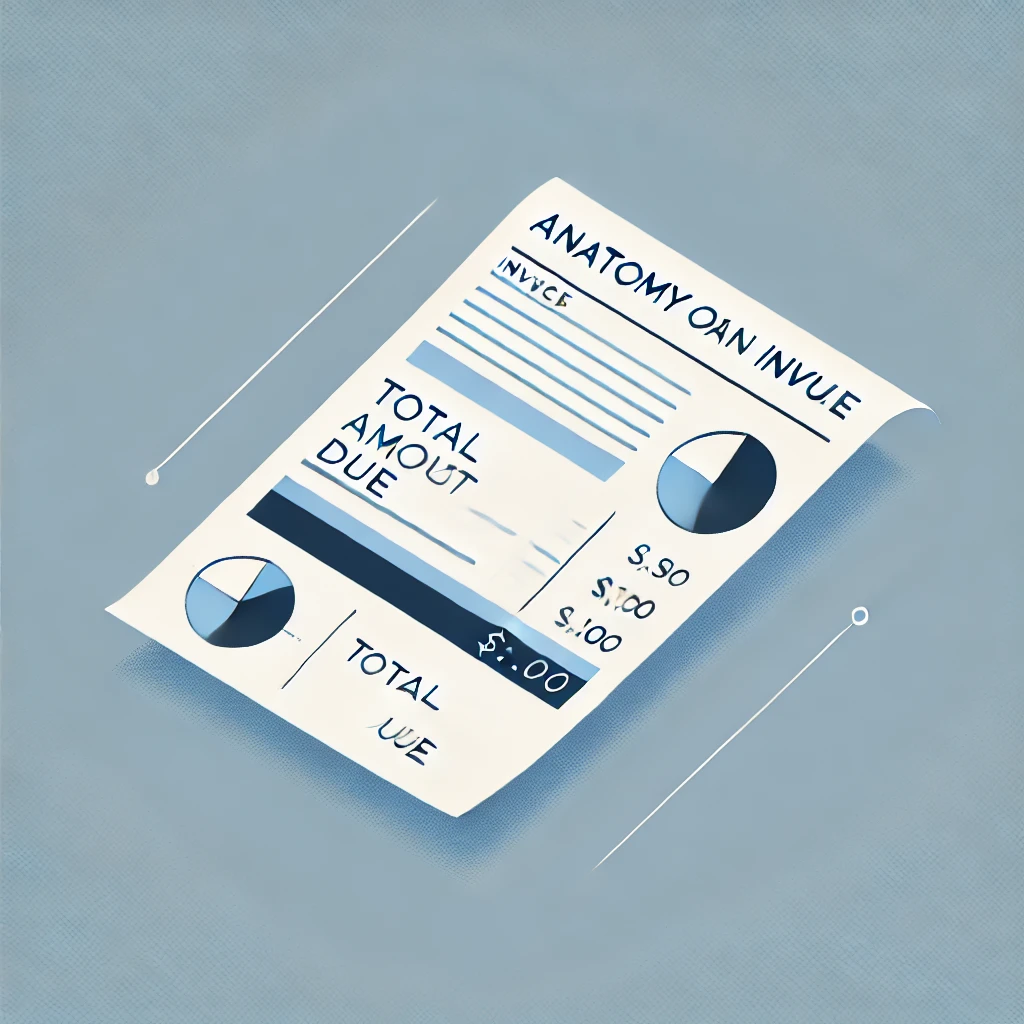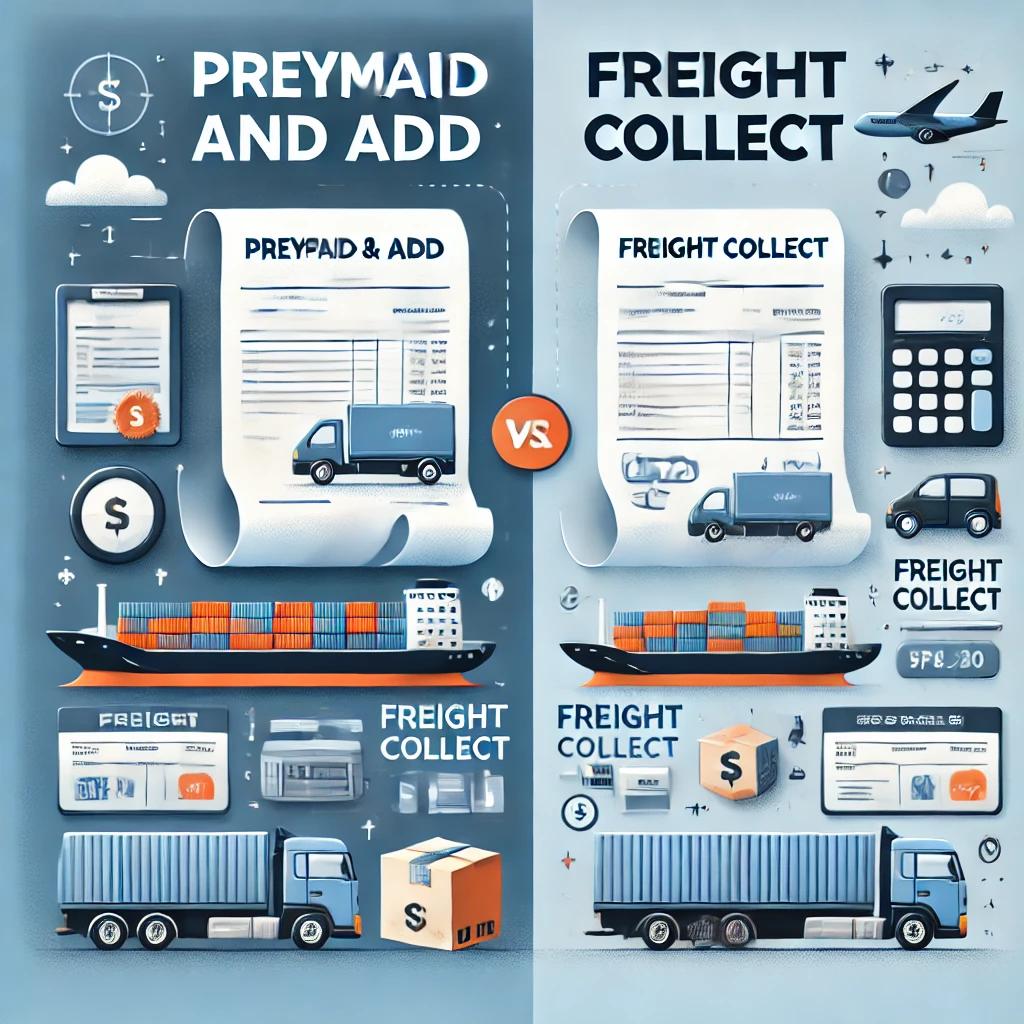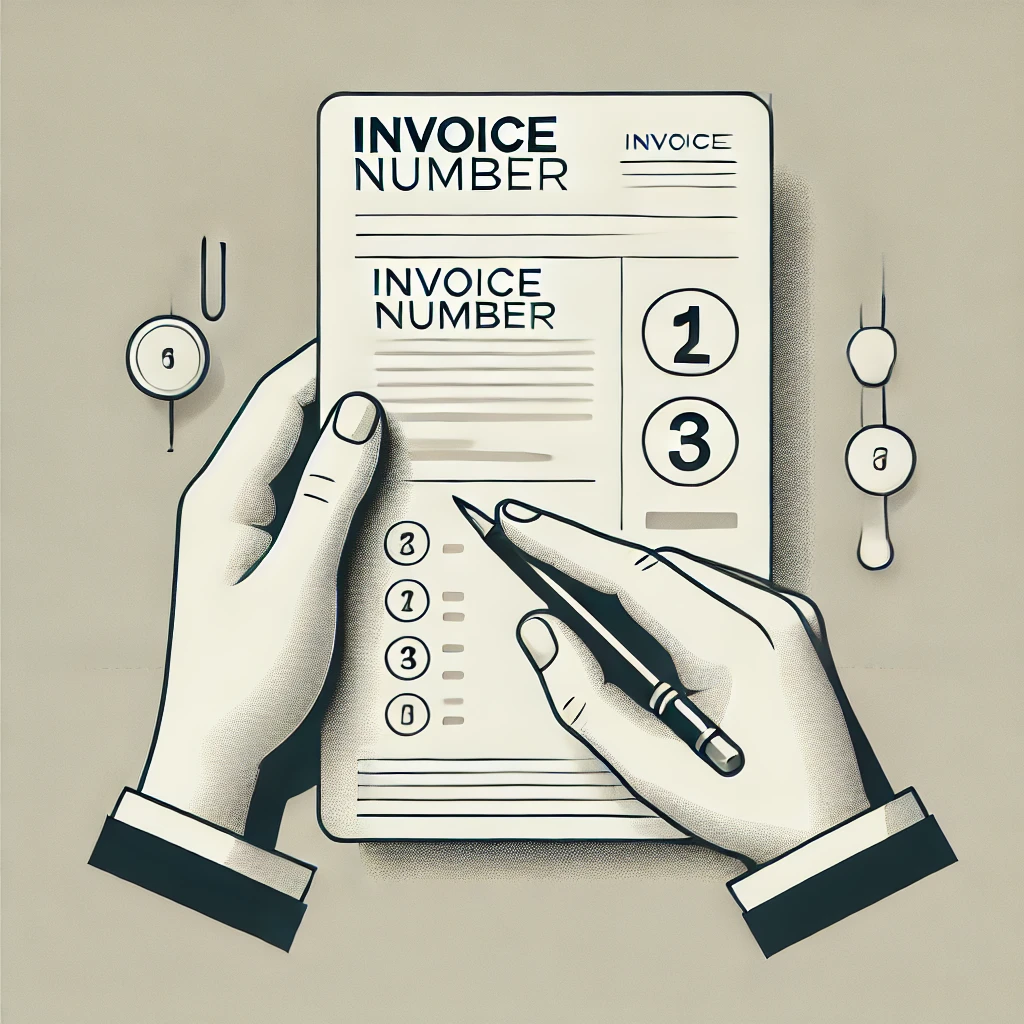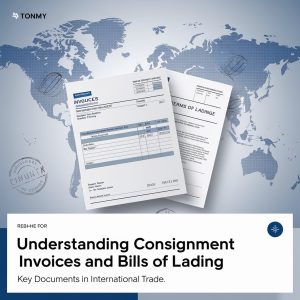What Does Prepaid and Add Mean? A Comprehensive Guide to Shipping Terms

Understanding "Prepaid and Add"
What Does Prepaid and Add Mean?
“Prepaid and Add” (also known as “Prepay and Add” or “PPA”) is a shipping term that describes a specific arrangement for handling freight charges. In this scenario:
- The shipper (sender) pays the carrier for the freight charges upfront.
- The shipper then adds these freight charges to the invoice sent to the consignee (receiver).
- The consignee reimburses the shipper for the freight costs as part of the total payment for the goods.
In simpler terms, the sender pays for shipping and then charges the receiver for it.
Key Points About Prepaid and Add:
- The shipper initially bears the cost of freight.
- The freight charge is added to the invoice for the goods.
- The consignee ultimately pays for both the goods and the shipping.
- This method allows the shipper to control shipping arrangements and costs.
The Process of Prepaid and Add Shipping
To better understand how Prepaid and Add works, let’s break down the process:
- Shipping Arrangement: The shipper chooses a carrier and negotiates freight rates.
- Payment to Carrier: The shipper pays the carrier for the transportation services.
- Invoicing: The shipper creates an invoice for the consignee that includes:
- The cost of the goods
- The freight charges (clearly itemized)
- Any additional fees or taxes
- Shipment: The goods are transported to the consignee.
- Payment: The consignee pays the total invoice amount to the shipper, which includes reimbursement for the freight charges.
Advantages of Prepaid and Add
Understanding the benefits of this shipping term can help businesses decide if it’s the right choice for their operations:
- Control Over Shipping: The shipper can choose the carrier and negotiate rates.
- Predictable Costs: The shipper knows the exact shipping cost upfront.
- Simplified Accounting: All charges are consolidated on one invoice.
- Potential for Better Rates: Shippers who frequently use the same carrier may negotiate better rates.
- Cash Flow Management: The shipper can time invoicing to align with their cash flow needs.
Disadvantages of Prepaid and Add
While there are benefits, this method also has some potential drawbacks:
- Initial Cash Outlay: The shipper must pay freight charges upfront.
- Risk of Non-Payment: If the consignee doesn’t pay, the shipper loses both product and shipping costs.
- Administrative Burden: The shipper must manage the billing process.
- Potential for Disputes: Disagreements may arise over added freight charges.

Prepaid and Add vs. Freight Collect: A Detailed Comparison
To fully grasp the concept of Prepaid and Add, it’s crucial to compare it with its primary alternative: Freight Collect. Understanding the differences between these two shipping terms can help businesses make informed decisions about their shipping strategies.
Prepaid and Add (PPA)
- Payment Process:
- Shipper pays the carrier upfront
- Shipper adds freight charges to the invoice sent to the consignee
- Consignee reimburses the shipper for freight costs
- Control:
- Shipper has control over carrier selection and rates
- Shipper can negotiate better rates with preferred carriers
- Cash Flow:
- Requires initial cash outlay from the shipper
- Shipper recovers costs upon payment of the invoice
- Invoicing:
- Single invoice includes both goods and freight charges
- Simplifies accounting for the consignee
- Risk:
- Shipper bears the risk of non-payment for both goods and freight
Freight Collect
- Payment Process:
- Consignee pays the carrier directly upon delivery
- Freight charges are separate from the cost of goods
- Control:
- Consignee has control over carrier selection and rates
- Consignee can negotiate with carriers directly
- Cash Flow:
- No initial cash outlay for the shipper
- Consignee must have funds ready at the time of delivery
- Invoicing:
- Separate invoices for goods and freight charges
- May complicate accounting for both parties
- Risk:
- Carrier bears the risk of non-payment for freight charges
- Shipper’s risk is limited to the value of goods
Key Differences
- Payment Timing:
- PPA: Shipper pays upfront, consignee pays later
- Freight Collect: Consignee pays upon delivery
- Payment Recipient:
- PPA: Shipper pays carrier, consignee pays shipper
- Freight Collect: Consignee pays carrier directly
- Control Over Shipping:
- PPA: Shipper has more control
- Freight Collect: Consignee has more control
- Financial Responsibility:
- PPA: Shipper initially, then transferred to consignee
- Freight Collect: Consignee entirely
- Billing Complexity:
- PPA: Single invoice (usually simpler)
- Freight Collect: Separate invoices (potentially more complex)
Choosing Between Prepaid and Add and Freight Collect
The choice between these two shipping terms depends on several factors:
- Relationship Dynamics:
- PPA is often preferred when the shipper wants to maintain control over shipping arrangements
- Freight Collect may be chosen when the consignee has stronger carrier relationships or prefers to manage shipping
- Cash Flow Considerations:
- PPA may be better for consignees who prefer to delay payment
- Freight Collect can be advantageous for shippers who want to avoid upfront costs
- Volume and Frequency of Shipments:
- PPA can be beneficial for high-volume shippers who can negotiate better rates
- Freight Collect might be preferred for infrequent or one-time shipments
- Industry Norms:
- Some industries traditionally favor one method over the other
- International Shipping:
- PPA can simplify customs processes in some cases
- Freight Collect might be preferred in countries with strict currency controls
Impact on Business Relationships
The choice between Prepaid and Add and Freight Collect can significantly affect business relationships:
- Trust and Cooperation:
- PPA requires trust that the shipper will secure fair shipping rates
- Freight Collect allows the consignee more autonomy in shipping decisions
- Negotiation Power:
- PPA gives the shipper more leverage with carriers
- Freight Collect empowers the consignee in carrier negotiations
- Customer Service:
- PPA can offer a more streamlined experience for the consignee
- Freight Collect provides more control and flexibility to the consignee
- Dispute Resolution:
- PPA may lead to disputes over added freight charges
- Freight Collect can result in delivery delays if payment issues arise
By understanding the nuances of both Prepaid and Add and Freight Collect, businesses can make informed decisions that align with their operational needs, financial strategies, and customer relationships. The choice between these two methods can have far-reaching implications on shipping efficiency, cost management, and overall supply chain dynamics.
.
The Impact of Prepaid and Add on Business Operations
Choosing to use Prepaid and Add can significantly affect various aspects of a business:
Financial Management
- Cash Flow: Requires careful management due to upfront payment of freight charges.
- Pricing Strategy: May influence how products are priced to account for shipping costs.
- Profit Margins: Can help maintain margins by ensuring all shipping costs are recovered.
Customer Relations
- Transparency: Requires clear communication about shipping charges on invoices.
- Negotiations: May be a point of discussion in business deals and contracts.
- Customer Satisfaction: Can affect customer perception depending on how it’s implemented and communicated.
Logistics and Supply Chain
- Carrier Relationships: Allows businesses to build stronger relationships with preferred carriers.
- Shipping Efficiency: Gives more control over shipping processes and timelines.
- International Trade: Can simplify some aspects of cross-border shipping.
Best Practices for Implementing Prepaid and Add
To effectively use Prepaid and Add in your shipping strategy:
- Clear Communication: Ensure all parties understand the terms before agreeing to a transaction.
- Detailed Invoicing: Clearly itemize freight charges on invoices to avoid confusion.
- Rate Negotiation: Regularly review and negotiate rates with carriers to ensure competitive pricing.
- Policy Documentation: Develop clear internal policies for when and how to use Prepaid and Add.
- Customer Education: Provide resources to help customers understand your shipping terms.
- Regular Review: Periodically assess the impact of Prepaid and Add on your business and adjust if necessary.

The Role of Technology in Managing Prepaid and Add Shipments
Modern logistics software and platforms can greatly simplify the management of Prepaid and Add shipments:
- Automated Invoicing: Generate invoices that automatically include freight charges.
- Rate Comparison Tools: Quickly compare carrier rates to ensure the best deal.
- Shipment Tracking: Provide real-time updates on shipment status to all parties.
- Financial Integration: Connect shipping data with accounting systems for streamlined operations.
- Analytics: Analyze shipping data to optimize costs and processes over time.
Legal and Regulatory Considerations
When using Prepaid and Add, be aware of potential legal and regulatory issues:
- Contract Law: Ensure your agreements clearly outline the terms of Prepaid and Add.
- International Regulations: Be aware of how different countries treat this shipping arrangement.
- Tax Implications: Understand how passing on shipping costs affects tax calculations.
- Consumer Protection Laws: For B2C transactions, be aware of regulations regarding shipping charges.

Prepaid and Add in Different Industries
The application of Prepaid and Add can vary across industries:
Manufacturing
- Often used for large, regular shipments to recurring customers.
- Helps maintain control over shipping quality and timeliness.
Retail
- Less common in B2C transactions but may be used in B2B retail supply chains.
- Can help retailers manage shipping costs for large or valuable orders.
Agriculture
- Used for shipping perishable goods where control over transit time is crucial.
- Helps manage the cost of specialized shipping requirements (e.g., refrigeration).
Technology
- Often used for high-value electronics shipments.
- Allows tech companies to ensure proper handling and insurance of sensitive equipment.
The Future of Prepaid and Add in Shipping
As the logistics industry evolves, so too will the application of shipping terms like Prepaid and Add:
- Increased Transparency: Digital platforms may provide more visibility into shipping costs for all parties.
- Blockchain Integration: Could provide tamper-proof records of shipping arrangements and payments.
- AI-Driven Optimization: Artificial intelligence might suggest the most cost-effective shipping methods, including when to use Prepaid and Add.
- Sustainability Considerations: May be used to manage and distribute the costs of more environmentally friendly shipping options.
Conclusion: Mastering Prepaid and Add for Efficient Shipping
Understanding “What does Prepaid and Add mean?” is crucial for anyone involved in logistics and supply chain management. This shipping term offers a unique balance of control and cost management, allowing shippers to handle freight charges upfront while ultimately passing the cost to the consignee.
By mastering the ins and outs of Prepaid and Add, businesses can:
- Optimize their shipping processes
- Maintain better control over transportation costs
- Potentially improve cash flow management
- Strengthen relationships with carriers and customers alike
However, it’s important to remember that Prepaid and Add isn’t always the best choice for every situation. Businesses should carefully consider their specific needs, customer relationships, and financial situation when deciding whether to use this shipping term.
As with all aspects of logistics, clear communication, detailed documentation, and a thorough understanding of the implications are key to successfully implementing Prepaid and Add in your shipping strategy. By staying informed about this and other shipping terms, you’ll be better equipped to navigate the complex world of freight and logistics, ensuring your goods reach their destination efficiently and cost-effectively.
